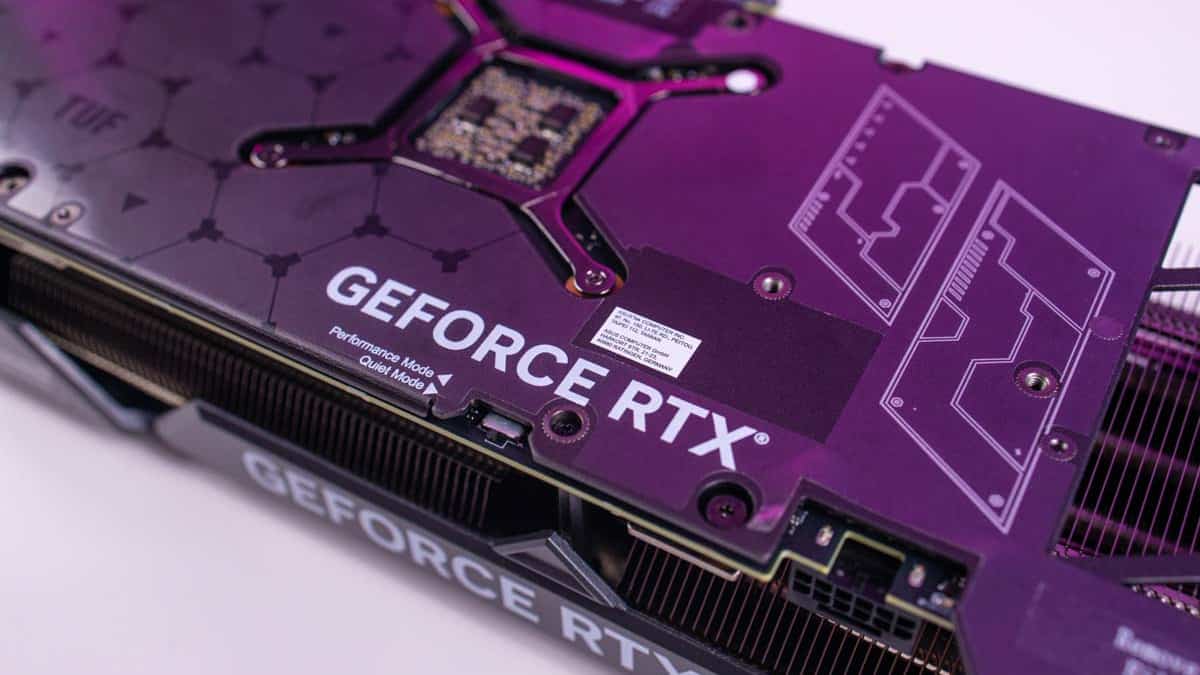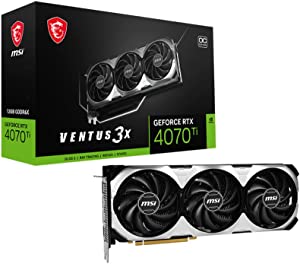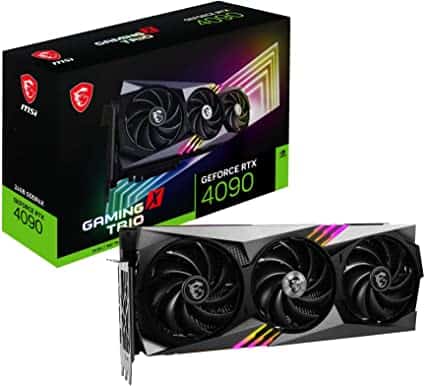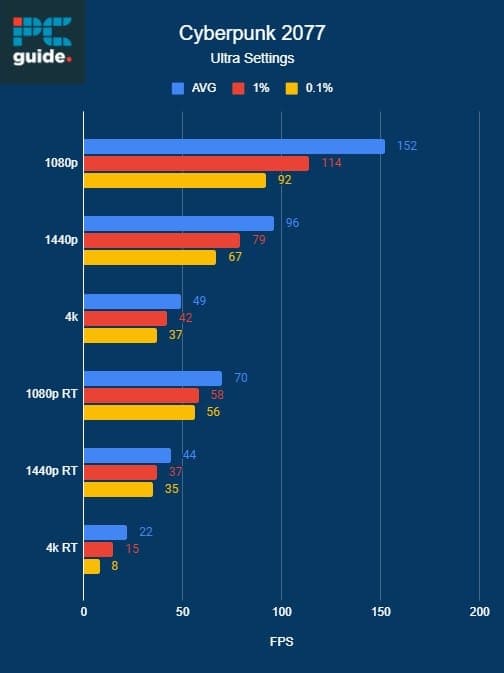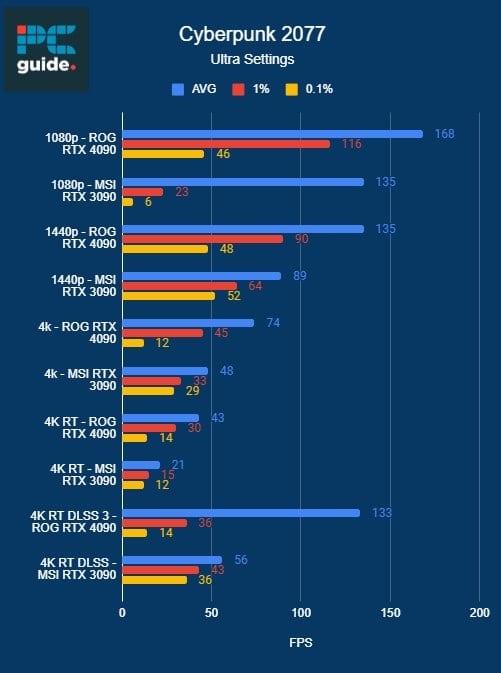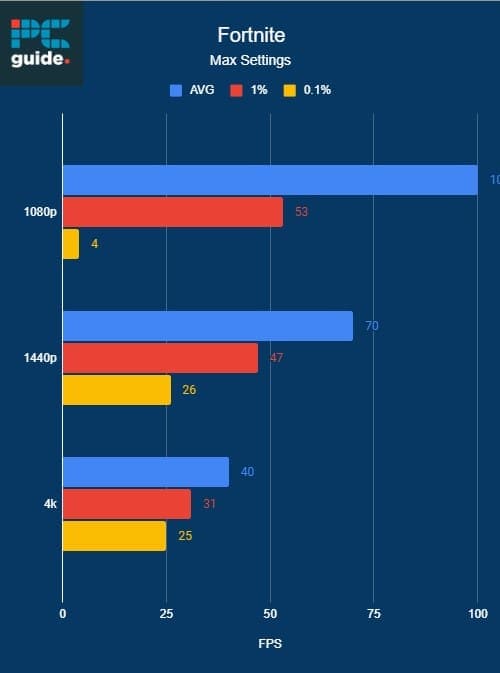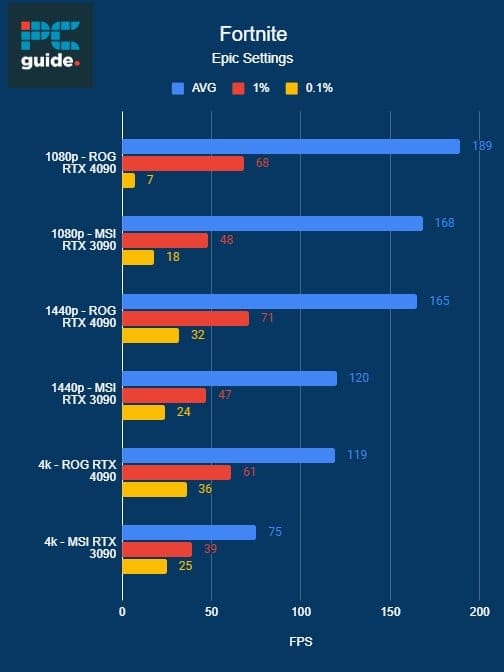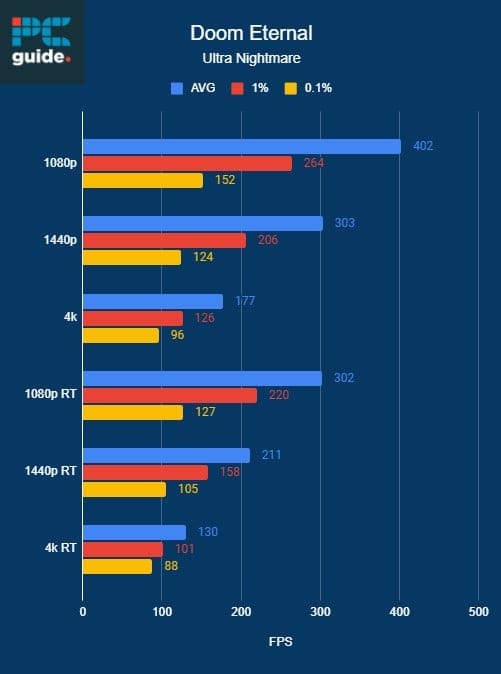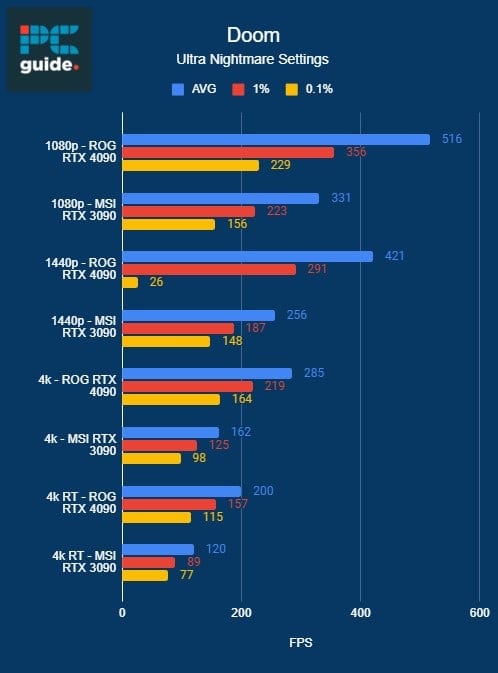RTX 4070 Ti vs RTX 4090 – how big is the difference?
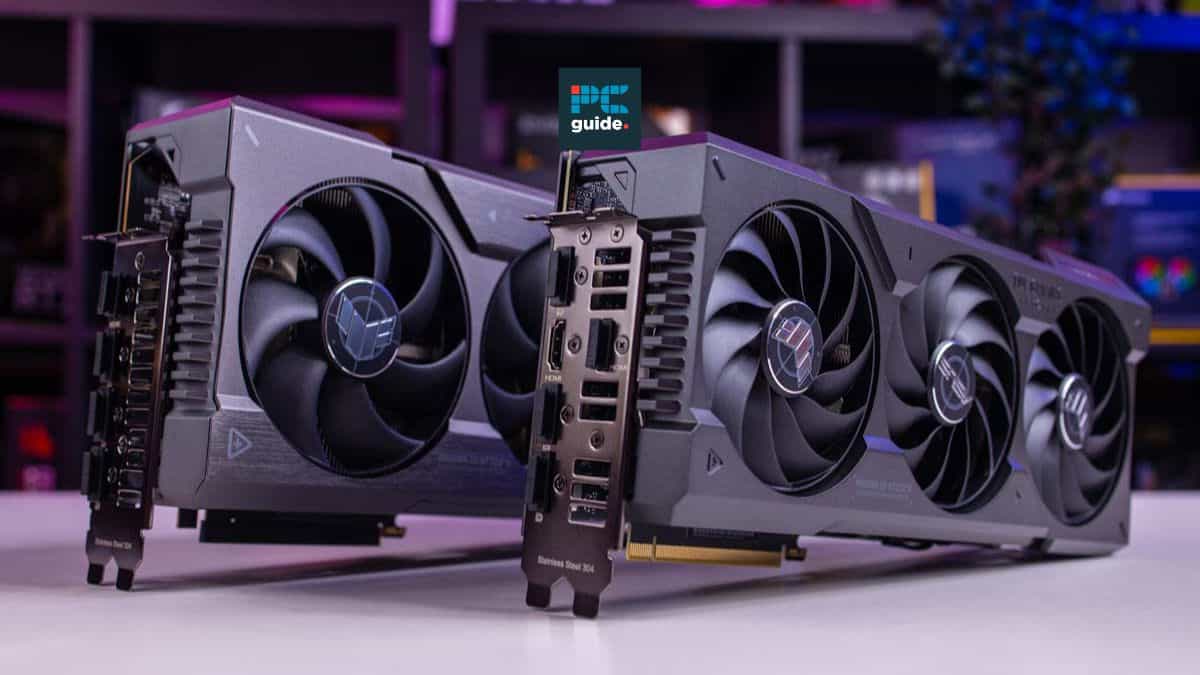
Table of Contents
The Nvidia GeForce RTX 4090 is unrivaled in its spot as Nvidia’s flagship gaming GPU, but just how far behind is the RTX 4070 Ti trailing? If you consider the 4090 overkill but still want a supremely powerful GPU, there’s no doubt you’ll have your eye on one of the lineups from the RTX 4070 series. So, in this article, we’re comparing the RTX 4070 Ti vs the RTX 4090 to help you gauge the difference between them and locate where the 4070 Ti sits on the performance podium in relation to the flagship.
We’ve had the hands-on experience with both cards, and have pulled on several key indicators such as specs and price in addition to our performance benchmarks. Of course, for more on the fine details of each card, you can read our individual RTX 4090 review, and our RTX 4070 Ti review too.
Prime Day is finally here! Find all the biggest tech and PC deals below.
- Sapphire 11348-03-20G Pulse AMD Radeon™ RX 9070 XT Was $779 Now $739
- AMD Ryzen 7 7800X3D 8-Core, 16-Thread Desktop Processor Was $449 Now $341
- ASUS RTX™ 5060 OC Edition Graphics Card Was $379 Now $339
- LG 77-Inch Class OLED evo AI 4K C5 Series Smart TV Was $3,696 Now $2,796
- Intel® Core™ i7-14700K New Gaming Desktop Was $320.99 Now $274
- Lexar 2TB NM1090 w/HeatSink SSD PCIe Gen5x4 NVMe M.2 Was $281.97 Now $214.98
- Apple Watch Series 10 GPS + Cellular 42mm case Smartwatch Was $499.99 Now $379.99
- ASUS ROG Strix G16 (2025) 16" FHD, RTX 5060 gaming laptop Was $1,499.99 Now $1,274.99
- Apple iPad mini (A17 Pro): Apple Intelligence Was $499.99 Now $379.99
*Prices and savings subject to change. Click through to get the current prices.
Quick Answer
The RTX 4070 Ti is the most expensive of every other ‘X070’ card from Nvidia, and is also stronger than them all, reaching about the same performance delivery as the 3090. And, although getting to the same level as the 4090 was never a possibility, DLSS 3rd-gen gives the Ti GPU an amazing boost. If you can’t stretch to flagship prices, the 4070 Ti is a solid choice. What’s worth noting though, is that the 4070 Ti has been effectively replaced by the RTX 4070 Ti Super that came out in January 2024, offering an improved performance for the same MSRP.
RTX 4070 Ti vs 4090 specs comparison
| Specs | RTX 4070 Ti | RTX 4090 |
|---|---|---|
| Architecture | ADA Lovelace | ADA Lovelace |
| CUDA cores | 7680 | 16384 |
| VRAM | 12 GB GDDR6X | 24Gb GDDR6X |
| Memory Interface Width | 192 bit | 384 bit |
| Memory bandwidth | 504.2 GB/s | 1,008 GB/s |
| Process Technology | TSMC 4nm | TSMC 4nm |
| Base clock speed | 2310 MHz | 2235 MHz |
| Boost Clock speed | 2610 MHz | 2520 MHz |
| Graphics Card Power (TDP) | 285 W | 450 W |
The table speaks for itself, and it’s clear from the numbers why the RTX 4090 is probably the best graphics card out there, and for that reason, it was awarded a neat 4.5/5 stars in our review. To break it down, you’ve got the only Ada Lovelace architecture graphics card to be forged on the AD102 silicon, coming with an unparalleled 16,384 CUDA cores, 512 TMUs, 176 ROPS, and a whopping 24GB GDDR6X VRAM with a 384-bit memory bus. Aside from cores and VRAM, one of the most notable technical feats of the 4090 is the 1,008 GB/sec bandwidth, just over 1TB/sec, which is unmatched by any other consumer-level graphics card. There’s a caveat though, and that comes in the form of its unsurprisingly hefty 450W power draw which will demand a 1000W minimum power supply.
What this translates to is a GPU that absolutely breezes through even the most demanding 4K environments. Realistically, there's no unit alive that can achieve what this GPU can achieve; so this type of comparison is focused on sharing some perspective on the subject. Both GPUs were made thanks to the enhancements of the ADA Lovelace architecture, and using the small 4nm TSMC chip. That configuration allows both units to maintain a larger number of transistors to give life to the core count. The 4090 has 16,384 CUDA cores, while the 4070 Ti has 7,680; an almost 50% reduction.
The same goes for the memory of the units; the 4090 has 24GB while the 4070 Ti counts 12GB. In both scenarios, there is an understandable change considering that both cards are aimed at a different market. It is worth remembering that the 4070 Ti is more than capable of handling 4K – especially with the 3rd-gen DLSS – but the GPU is mainly aimed at devouring the 1440p gaming market.
As we can see in the table above. The RTX 4070 Ti shows its claws when it comes to power consumption. With a TDP of only 285 W is around 60% less power-hungry than the 4090, and is even less power-hungry than any other X070 GPUs. We appraise this as a good sign in the mid-range Nvidia GPUs family. Team Green’s TDP had been going up exponentially, which leads to having to buy more expensive PSUs, paying higher bills, etc. Having this low a TDP shows us that there is some thought to taking the right path.
RTX 4070 Ti vs RTX 4090 performance
Nvidia uses the RTX 3080 as a starting point to compare the performance of the new 4070 Ti. According to Team Green stats, the 4070 Ti can be up to 3.5x faster than the 3080; achieving double the FPS in Microsoft Flight simulator, a 1.75x better FPS delivery in Warhammer 40,000: Darktide and a mighty 3.5x better FPS performance in Cyberpunk 2077 with the new RT overdrive on.
The test was taken for 1440p gaming, with the highest settings, DLSS Super Resolution Quality Mode, and Frame Generation on RTX 40 Series. These results talk nicely to the capacity of the RTX 4070 Ti; they also give a sense of power and efficiency that any other X070 class ever had. We can see how DLSS and ray tracing have made a big difference in performance capabilities, and this is held up in our in-house benchmarks for the 4070 Ti.
In our testing, we got further evidence that the 4070 Ti is a strong 1440p player that can be bumped up to 4K in less demanding environments. First, Cyberpunk 2077 averaged 152 FPS at 1080p, 96 FPS at 1440p, and just below playable 49 FPS at 4K in Ultra settings. No doubt, with a bit of settings adjustment, this could be edged up to around 60 FPS if you are after 4K gameplay. Fortnite in Epic Settings had a similar pattern, reaching 100 FPS at 1080p, 70 FPS at 1440p, and 40 FPS when at 4K.
On the other hand here, as Nvidia’s flagship gaming GPU, it’s no surprise that the RTX 4090 glides through 4K at Ultra settings. Cyberpunk 2077 saw the card achieve a 74 FPS average in 4K without ray tracing, Fortnite in 4K reached a 119 FPS average, and finally, Doom in Ultra Nightmare settings got up to 200 FPS in 4K RT.
When we take a look at the raw performance of the RTX 4090, we can see how it dominates the 4K gaming scene. The extra memory space and bandwidth allow this GPU to handle this amount of data to be transferred swiftly and efficiently. On the other side, the 4070 Ti, was not aiming for 4K gaming, but the strong ray tracing and AI upscaling techniques of the series will allow this GPU to deliver 60+ FPS in 4K in a lot of games.
When we go down the rabbit hole to 1440p and 1080p gaming the 4070 Ti should really move up the podium. The specs alone of this GPU added to the new features and architecture, placing it around the same level as the 3090. Something that we could never imagine happening with the previous generation: a mid-range GPU is now as strong as the previous series flagship. Of course, this card has now been succeeded by the RTX 4070 Ti Super, which offers even better performance for the same MSRP.
RTX 4070 Ti vs RTX 4090 price
Whenever we make a direct price comparison on an Nvidia GPU, we know the price section will take some heat, and this is no exception. Obviously, given the disparities in specs and performance, a big gap in the pricing of the two cards is expected. The RTX 4070 Ti has an MSRP of $799, while the 4090 was launched at $1599.00. We can see an $800 difference in pricing; the 4070 Ti looks capable of only 50% of the performance the 4090 behemoth delivers so it lines up that there would be a 50% difference in price too.
Clearly, neither of these cards would get listed as one of the best budget GPUs. However, what is worth noting is that as the flagship GPU from Nvidia, the RTX 4090 is not as likely to get a significant price drop as the 4070 Ti. What’s more, the 4070 Ti has been effectively replaced by the 4070 Ti Super, which offers an improved performance for the same MSRP of $799 – this is bound to send the price of the 4070 Ti even lower. We’ve compared the RTX 4070 Ti vs the RTX 4070 Ti Super if you’re interested in the full rundown.
With such a clear price difference, you could consider the RTX 4070 Ti as the winner, perhaps offering a better price-to-performance ratio and more overall value. However, you can’t discount that the 4090 has a significantly higher price as it’s effectively operating in a league of its own, with its closest AMD contemporary being the RX 7900 XTX.
PC Guide expert view
Overall, it’s not a surprise that the RTX 4090 outperforms the RTX 4070 Ti. The latter has shown to be half as powerful as the RTX 4090 both spec-wise and performance-wise; although its pricing reflects that it’s perhaps still too expensive to be an X070-class GPU. We would love to see a more realistic price, that serves as a mid-level entry for people without those resources to get a bite of the new Nvidia capabilities, which we can’t deny, are amazing.
We never intended to make a battle between these two classes; our intention was to shed some light of perspective on both the high power of the RTX 4090 and the still impressive abilities of the 4070 Ti. Of course, you should also weigh in on the state of your current PC setup: as such a beastly card, the 4090 should only really be considered if you’ve got the budget to invest in one of the best CPU for the RTX 4090.


